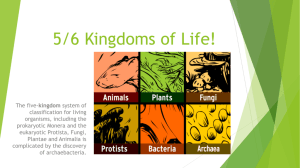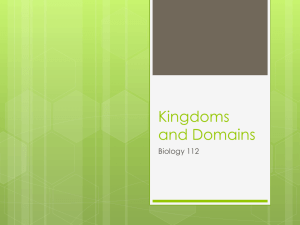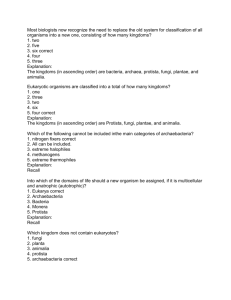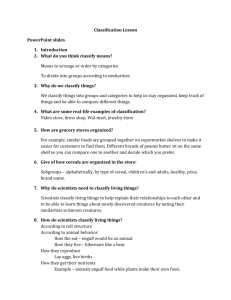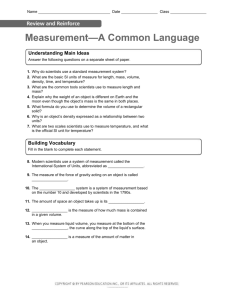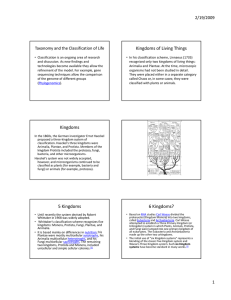Updating Classification Systems For many years after Linnaeus
advertisement
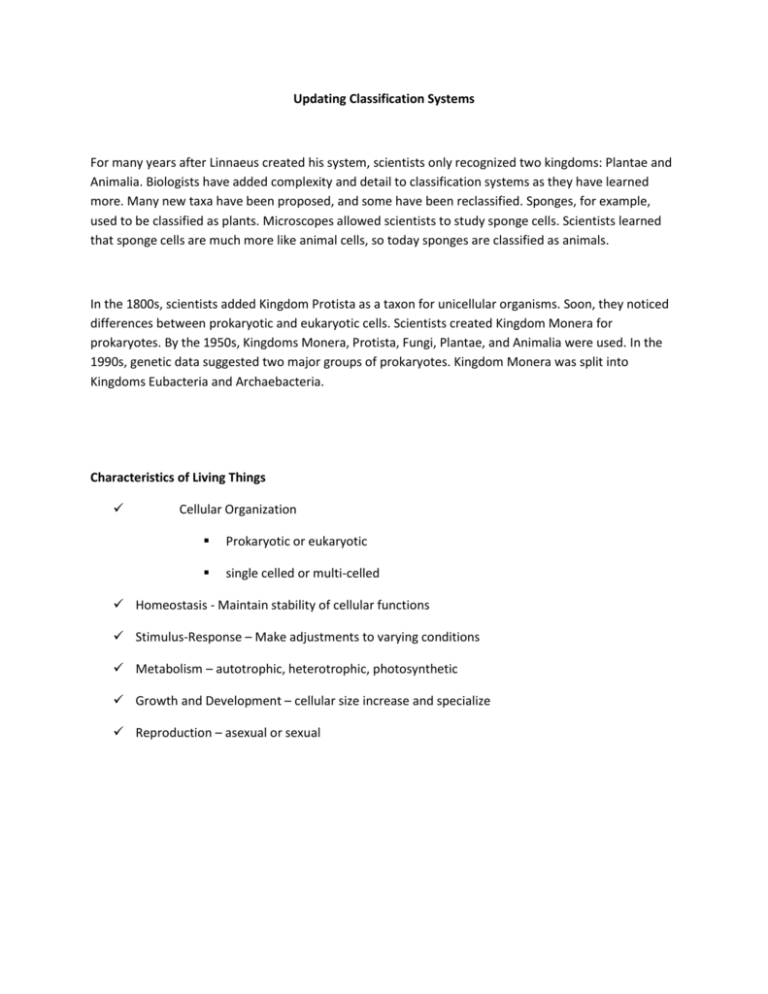
Updating Classification Systems For many years after Linnaeus created his system, scientists only recognized two kingdoms: Plantae and Animalia. Biologists have added complexity and detail to classification systems as they have learned more. Many new taxa have been proposed, and some have been reclassified. Sponges, for example, used to be classified as plants. Microscopes allowed scientists to study sponge cells. Scientists learned that sponge cells are much more like animal cells, so today sponges are classified as animals. In the 1800s, scientists added Kingdom Protista as a taxon for unicellular organisms. Soon, they noticed differences between prokaryotic and eukaryotic cells. Scientists created Kingdom Monera for prokaryotes. By the 1950s, Kingdoms Monera, Protista, Fungi, Plantae, and Animalia were used. In the 1990s, genetic data suggested two major groups of prokaryotes. Kingdom Monera was split into Kingdoms Eubacteria and Archaebacteria. Characteristics of Living Things Cellular Organization Prokaryotic or eukaryotic single celled or multi-celled Homeostasis - Maintain stability of cellular functions Stimulus-Response – Make adjustments to varying conditions Metabolism – autotrophic, heterotrophic, photosynthetic Growth and Development – cellular size increase and specialize Reproduction – asexual or sexual
